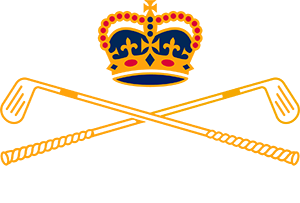Sustainability
Royal Adelaide Golf Club is committed to the environment and sustainable management of our natural assets. Active projects include:
Yellowish Sedge-Skipper Re-Wilding
Yellowish Sedge-Skipper Re-Wilding
A collaborative effort between Royal Adelaide Golf Club, Green Adelaide, EntoSearch, Glenelg Golf Club and The Grange Golf Club.
A butterfly extinct along Adelaide’s coastal areas has returned to the region.
A Grassroots Grant from Green Adelaide examined the availability of existing sites suitable for caterpillar or butterfly releases at Royal Adelaide, Glenelg and The Grange Golf Clubs with further sites being planted for future releases.
A local entomologist deemed Royal Adelaide’s wetland areas as suitable habitat to release caterpillars of the yellowish sedge-skipper, a small brown and yellow butterfly. Entomologists from EntoSearch travelled to the Eyre Peninsula, where the species is well established, to collect yellowish sedge-skipper caterpillars. A selection of Royal Adelaide’s course staff were on site to assist with the release of several caterpillars in late-2021. In future, yellowish sedge-skipper butterflies will also be released.
Members and guests may come across the yellowish sedge-skipper in remnant wetlands and specially planted areas of gahnia filum (thatching grass or chaffy saw-sedge) near water bodies.
The butterfly uses thatching grass as its host plant which was quite common in the Adelaide region until habitat loss and use of insecticides saw it disappear from wetland habitats along the coast.
Other release sites for the yellowish sedge-skipper include wetlands throughout the City of Playford and the Aldinga Washpool. There is evidence at these sites that the releases are working and maintenance including fire management, is assisting in the future survival of the species. More sedgeland habitat will be added to the remnant wetland that will help establish a permanent population into the future.
RAGC Stormwater Project
A project co-funded by Royal Adelaide Golf Club, the Government of South Australia and the Australian Government.
During the Millennium drought, the Committee of the day had the foresight to secure a sustainable supply of irrigation water for the golf course through the RAGC Stormwater Project. Prior to the drought, the Club had access to unlimited free underground water for its irrigation needs. Since then, the Government of South Australia has regulated and restricted bore water use.
On average, the course requires 200 megalitres of bore water each year, primarily throughout the drier summer months. As such, the Club embarked on the RAGC Stormwater Project.
In cooperation with the Government of South Australia, the Club developed a wetland to harvest stormwater runoff from surrounding suburbs in a disused area of the facility. The stormwater is cleaned by the reedbeds in the wetland to a sufficient standard to be injected back into the underground aquifer.
Annually, the Club injects as much water back into the aquifer as it takes out over summer resulting in a net zero use of aquifer water.
Royal Adelaide was one of many water users that established stormwater harvesting programs in the Millennium drought.
From a holistic environmental point of view, harvesting of stormwater has reduced the amount of turbid stormwater discharged into the ocean. This water restricted sunlight to the native sea grasses which resulted in many grasses dying.
From an aquifer point of view, prior to these programs commencing, water levels within the aquifers were decreasing and water salinity increasing. Overly saline water can affect turf, particularly the bent grass on the greens. Since the implementation of these stormwater harvesting programs, the water levels within the aquifers have increased, which has in turn reduced water salinity.
Overall, the RAGC Stormwater has secured a sustainable supply of clean irrigation water for the golf course which has resulted in beautification of the Club’s property.
